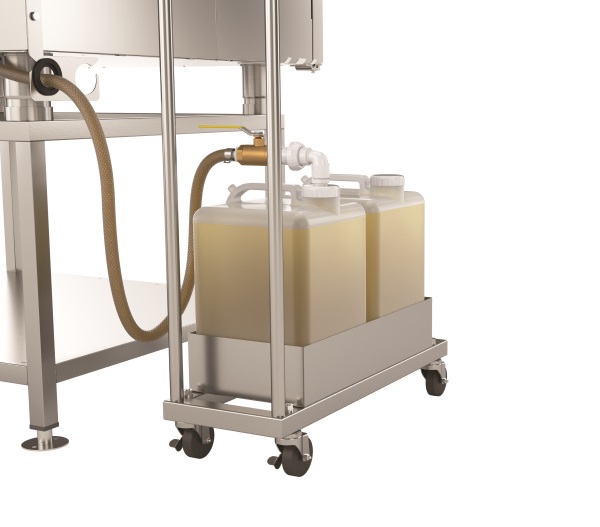Alto-Shaam
Grease is the word
One of the biggest challenges facing restaurant owners and chefs, and also a challenge to kitchen equipment manufacturers, is how to minimise and manage waste, and especially grease.

One of the biggest challenges facing restaurant owners and chefs, and also a challenge to kitchen equipment manufacturers, is how to minimize and manage waste, and especially grease.
Cleaning ovens after use is a time-consuming, dirty, and thankless task. It can also present environmental issues in terms of the chemicals required, whether in liquid or tablet form, and in the amounts of water consumed, and how dirty water is removed.
Kitchen equipment manufacturers are innovating to overcome these challenges, not least in the development of new automatic self-cleaning systems. The latest systems include those used on Alto-Shaam’s new Self-Cleaning Rotisserie Ovens and Prodigi™ combi ovens.
Alto-Shaam's Self-Cleaning Rotisserie Oven uses patent-pending water jets that cut through the toughest grease while minimizing water use. The eco-friendly, self-cleaning system, which does not require a compressor, uses 35 percent less water than competitive models and has no moving parts, which increases reliability and reduces maintenance costs. Different levels of clean can be performed with a maximum clean time of three hours. Additionally, Prodigi combi ovens offer up to five cycle options from "light clean" to "heavy soil."
Cleaning products are available in the form of tablets or hands-free liquid injection, and the tablets are safe enough to be sent in the ordinary post (i.e., they do not require a special courier), which again significantly reduces cost over time. The spits can also be left in the unit during the cleaning cycle. This further reduces labor associated with hand-washing or washing in a standard dishwasher.
As well as the cleaning cycle, which is undertaken after the oven has been used and often overnight, there is also a grease collection system that automatically activates during the cooking process. The system pumps grease (as opposed to using a gravity-fed drain) into external collection containers for safe handling and disposal. By eliminating the need to lift and carry grease collection pans, foodservice operators are able to save labor and further improve safety for their employees.
Manufacturers also consider other designs for removing grease and waste from the kitchen. Several ovens, for example, include built-in hoses, often installed inside the chamber itself. More recent designs, however, allow for the hose to be installed on the front of the oven, enabling the hose to be easier to retract and use. They even feature an automatic shut-off. Not only are such designs more practical, but they are also safer for the operator.
Grease can be a safety hazard, and manufacturers continue to explore new ways of cleaning to improve safety, save time and money, and allow staff to be better employed on more value-added activities.
